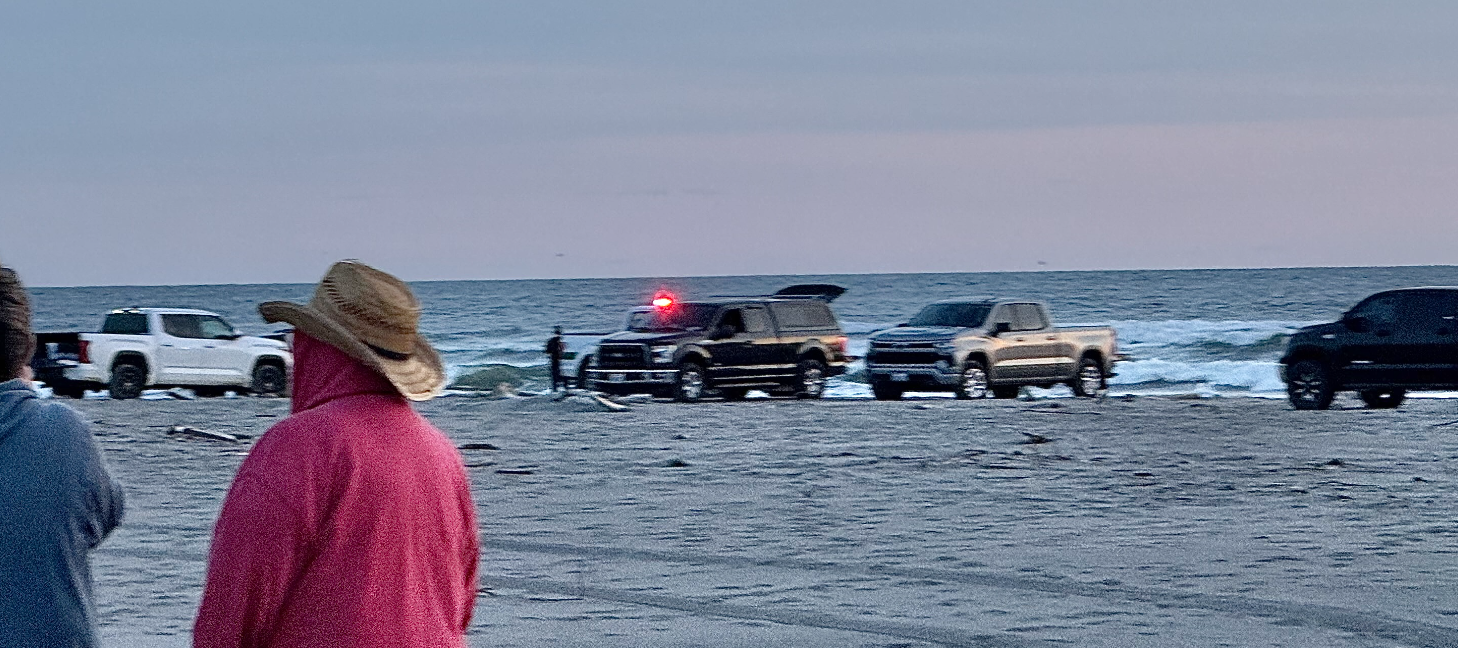This Nest of Dangers: The elegant Erria goes up in flames
Published 11:33 am Thursday, November 21, 2024

- The sleek Erria, belonging to Denmark’s East Asiatic Company, is pictured in 1953 following a refit after a fire in the Lower Columbia River.
Five days before Christmas 1951, at 2:30 in the morning, Astorians awoke to find an elegant vessel out front in the River, on fire.
The slim white ship-shape MS Erria, with its four raked masts, was part of Denmark’s East Asiatic Company fleet. She sailed a route which took her the breadth of the western hemisphere.
Erria had come south to Portland from Vancouver, B.C., and Puget Sound to load cruise passengers and regional cargo, in preparation for a sail through the Panama Canal to the Virgin Islands and then on to Europe.
After her Portland stop that night, she sailed downriver and anchored a bit west of Tongue Point where she would stay long enough to let the Columbia River’s rough Bar calm down. It was late, and most of the 114 persons on board — 83 crew members and 31 passengers — were down for the night.
As the Erria’s captain, Niels Agge, was preparing to raise the anchors to cross out of the river, he “saw smoke coming out of a companionway near hold No. 5.” The New York Times story continued, quoting the U.S. Coast Guard analysis of the event, “heavy smoke in the port alleyway of the crew’s quarters … [came from] a wastebasket filled with polishing rags that were smoldering.”
A crew member threw the basket into the river, the anchor was hauled up and the ship readied for departure. Capt. Agge was then quoted as saying, “In just one or two minutes the ship’s electrician reported smoke was continuing. I took the megaphone and shouted, ‘Go back and find out about that smoke.’ … I told the first mate to call out the sailors and help fight the fire.“
Another crew member down below later reported having seen sparks from electrical wires ignite dust in the wheat cargo hold.
“Capt. Agge said he heard someone shouting for help, looked over the bridge rail and saw two waiters in the sick bay with their heads out of portholes. They said they could not leave because of the smoke in the passageway … lines were lowered to the waiters and they were pulled on deck.”
By this time everyone on board, passengers and crew, had been called out. “However,” [the captain] said, “I still thought there was no immediate danger.“
Fast disaster
The Erria’s fire would soon prove to be dangerous — hot, fast-spreading, incorrigible and deadly.
The ship’s cargo, according to the Columbia River Maritime Museum’s Quarterdeck, was “steel, apples, wheat, and lumber.” The exuberantly explosive dust from wheat is notoriously flammable; and, of course, timber makes a fine fuel.
Astorian Don Fastabend, who helped fight the fire, commented, “The deck was all teak, and heavily oiled, and there were a lot of hardwoods used in the construction, and lots of varnish.”
It is small wonder that the fire burned for several days.
Step by step firefighting
Capt. Agge, after turning on the fire alarm, lowered the anchors and went down to fight the fire. It soon became clear that this intense, rapidly spreading blaze would not succumb to efforts to put it out. “Then we ordered everybody off.” It had been only 10 minutes since the first alarm was given.
While the fire roared on, the Erria’s lifeboats and rope ladders were lowered. Several Coast Guard and U S. Navy vessels appeared, as did local fishing boats, picking up survivors who had stumbled down the 40-foot-long ladders, in the dark, in their night clothes, with smoke, fumes, and flames overwhelming their beautiful ship.
Confusion was everywhere, but there was said to have been no panic. Some passengers stationed themselves in the lounge, but it soon filled with smoke.
Meanwhile, the Coast Guard’s buoy tenders White Bush and Ivy plus a Navy tug blasted the flames with water; Astoria’s salvage tug Salvage Chief provided support; Fastabend’s crew shot carbon dioxide into the hull. All the hours-long efforts helped, but the fire refused to be overcome. It would require the passage of time and the consumption of available fuel to become exhausted.
By 5 a.m. Erria was listing significantly from accumulated water in her hull, all the while “the fire was still going strong.”
Fastabend later wrote, “The next day … we used a barge to haul pumps out, and we pulled alongside the Erria and began pumping water into and out of the ship. We’d feel along for hot spots, burn a hole and pour in water. The fire was mostly between decks.”
Lost lives
As the survivors were gathered and a head-count taken, it became clear that 11 souls were missing. At first, it was thought that an Erria lifeboat had gone astray, but the Coast Guard soon accounted for all the lifeboats. The next step was to enter Erria’s smoldering husk, looking for bodies.
“I found the first two bodies by the doorway on the main promenade deck, two young women crew members,” Fastabend recalled. “The other people who died were sitting in chairs in the lounge just off the boat deck. We figured … these people were … overcome by smoke and gasses.”
One young passenger said that he and others had been trapped in the ship’s lounge by flames, and, according to an article in the Kitsap Sun, “the adults shoved him through a porthole but were unable to climb through themselves. He said he saw two of the men’s hair catch fire.”
What an awful memory.
Big money
Fastabend’s recollection concluded, “We all worked day and night, with not very much sleep, to get that fire out. I’ll never forget that I earned $600 the week of Christmas. And our normal wage back then was $1.85 an hour, so $600 was very big money for that time.”
After the fire was completely extinguished, the Salvage Chief towed the sad, ruined hulk to Portland, where it was made seaworthy. Ocean-going rescue tug Zwarte Zee then arrived to tow Erria’s remains to Rotterdam for refitting as a freighter. She sailed another decade and, finally, was scrapped in Japan in 1962.





